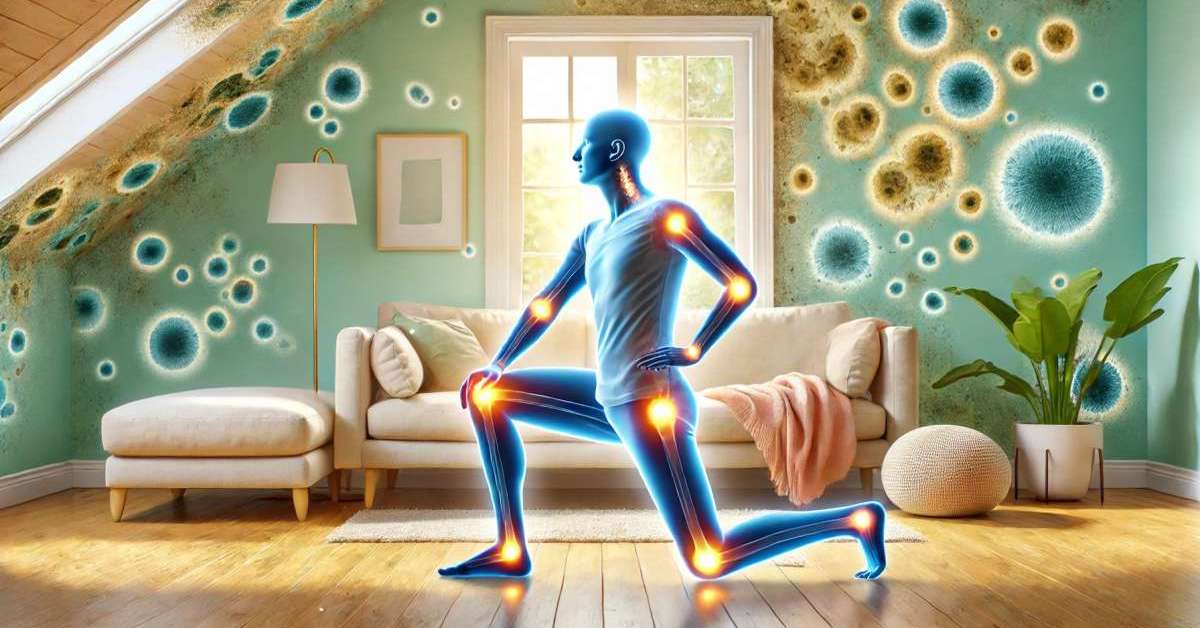
Is CIRS a Real Disease? What Science Tells Us
By Dr. Hina Zaman, MD
Have you ever received a medical diagnosis only to wonder if it’s actually legitimate? If you’ve been diagnosed with Chronic Inflammatory Response Syndrome (CIRS) or are researching it, you might be asking yourself: Is CIRS a real disease?
It’s a fair question. After all, patients with conditions like chronic Lyme disease frequently hear dismissive comments suggesting their symptoms are psychological rather than physical. When medical professionals doubt your experience, it’s natural to question your own reality.
Let me assure you: you’re not alone in this journey, and there’s solid science behind CIRS that we’ll explore together.
The Reality Behind Your Mysterious Symptoms
First, let me validate what you’re experiencing – those symptoms you feel are absolutely real, regardless of what conventional lab tests might show. The problem isn’t your perception; it’s that standard medical testing often misses the markers that would identify CIRS.
Think of it like searching for your keys in the living room when they’re actually in the kitchen. No matter how thoroughly you search the wrong room, you’ll never find what you’re looking for.
When patients come to me describing:
- Unexplained cognitive difficulties
- Persistent fatigue that doesn’t improve with rest
- Unusual sensitivities to foods, chemicals, or medications
- Joint pain that migrates throughout the body
I recognize these as potential indicators of CIRS. These symptoms aren’t imaginary – they just haven’t been properly investigated using the right diagnostic tools.
Why Some Medical Conditions Face Skepticism
Have you ever mentioned “adrenal fatigue” to your doctor only to receive a dismissive response? What about “leaky gut syndrome”?
Your physician wasn’t necessarily being unkind – they were responding to the lack of scientific evidence supporting these particular diagnostic labels. While the symptoms people experience are genuine, these specific frameworks for understanding them don’t always meet scientific criteria.
The challenge with many contested diagnoses is their reliance on vague, non-specific symptoms. Consider these common complaints:
- Feeling tired
- Having trouble concentrating
- Experiencing digestive discomfort
These symptoms could apply to hundreds of different conditions, from anemia to depression to celiac disease. They’re too general to point to any specific diagnosis on their own.
Compare that to the distinctive rash of shingles – a specific symptom that directly suggests a particular condition.
The Scientific Framework: How to Identify Legitimate Medical Conditions
Before we examine CIRS specifically, let’s establish a scientific framework for evaluating any medical condition’s legitimacy. For a condition to be medically validated, it should meet these three essential criteria:
- Specific symptom patterns described in peer-reviewed medical literature
- Objective diagnostic criteria published in scientific journals
- Measurable response to treatment (both subjectively and objectively)
Let’s apply this framework to a well-known condition – chronic Lyme disease – to demonstrate how it works.
Case Study: Chronic Lyme Disease
Criterion 1: Specific symptom patterns in peer-reviewed literature
Chronic Lyme disease symptoms are documented in medical literature, including:
- Arthritis affecting multiple joints
- Neurological symptoms (numbness, tingling)
- Cognitive difficulties
- Persistent fatigue
While many of these symptoms overlap with other conditions, their specific pattern following tick exposure does appear in medical journals.
Criterion 2: Objective diagnostic criteria
This is where chronic Lyme disease faces challenges. While acute Lyme disease has clear diagnostic tests (antibody testing, Western blot), chronic Lyme lacks consistently reliable biomarkers. The diagnostic criteria remain controversial among medical professionals.
Criterion 3: Measurable treatment response
Treatment outcomes for chronic Lyme disease vary widely and lack consistency in both patient improvement and objective markers.
Conclusion: Chronic Lyme disease remains controversial in mainstream medicine primarily because it doesn’t fully satisfy criteria 2 and 3.
Applying This Framework to CIRS
Now let’s evaluate CIRS using the same rigorous framework:
1. Does CIRS have specific symptom patterns described in peer-reviewed literature?
CIRS has a well-documented constellation of symptoms organized into 13 distinct clusters. According to research by Dr. Ritchie Shoemaker and colleagues, a diagnosis is considered when a patient presents with manifestations in at least 8 of these clusters.
These symptom clusters have been published multiple times in peer-reviewed journals. Additionally, the Government Accountability Office has published a consensus statement recognizing CIRS as a legitimate medical condition triggered by exposure to water-damaged buildings.
✓ CIRS satisfies criterion 1
2. Does CIRS have objective diagnostic criteria in peer-reviewed literature?
Unlike chronic Lyme disease, CIRS has multiple objective laboratory markers that can be measured, including:
- Reduced melanocyte-stimulating hormone (MSH) levels
- Decreased vasoactive intestinal peptide (VIP)
- Elevated transforming growth factor beta-1 (TGF-β1)
- Increased complement C4a
- Elevated matrix metallopeptidase 9 (MMP-9)
- Genetic susceptibility markers (HLA-DR)
- Antidiuretic hormone/osmolality imbalances
- Hormonal dysregulation (including cortisol and androgens)
These biomarkers have been consistently documented in scientific publications, providing objective criteria for diagnosis.
✓ CIRS satisfies criterion 2
3. Is there measurable improvement in both patient symptoms and laboratory values with treatment?
The scientific literature documents therapeutic response in CIRS patients following the Shoemaker Protocol. Dr. Shoemaker has published data on more than 6,000 patients treated for CIRS (including more than 2,000 cases and 450 controls) demonstrating:
- Subjective improvement in patient-reported symptoms
- Objective normalization of previously abnormal laboratory markers
- Sustained recovery when the full protocol is implemented
✓ CIRS satisfies criterion 3
The Verdict: CIRS Is a Legitimate Medical Condition
Based on this scientific analysis, CIRS meets all three criteria for a legitimate medical condition:
- It has specific symptom patterns documented in peer-reviewed literature
- It has objective diagnostic criteria published in scientific journals
- It shows measurable improvement in both patient experience and laboratory values with treatment
This stands in contrast to conditions that continue to face challenges in mainstream medical acceptance due to incomplete fulfillment of these criteria.
What This Means for Patients
If you’ve been diagnosed with CIRS, you can take comfort in knowing your condition:
- Is supported by scientific evidence
- Has objective biomarkers to measure progress
- Can be effectively treated with a structured protocol
Unlike conditions that lack objective diagnostic criteria, CIRS provides a clear pathway for both diagnosis and treatment. This means your healthcare provider can:
- Measure your baseline biomarkers
- Implement targeted treatments
- Track your improvement objectively
- Adjust your treatment plan based on measurable data
Moving Forward with Confidence
CIRS is a complex inflammatory condition, but one with established diagnostic criteria and effective treatment protocols. While the journey to wellness may not be simple, it is guided by scientific evidence rather than speculation.
If you suspect you might have CIRS, seek out a healthcare provider familiar with the condition who can order the appropriate diagnostic tests. With proper diagnosis and treatment, recovery is possible.
About the Author: Dr. Hina Zaman specializes in family medicine. She has helped many patients recover from various chronic conditions, including biotoxin-related illnesses like CIRS, through evidence-based protocols.
Resources
- National Institutes of Health (NIH) – A trusted source for health-related research and updates.
- Centers for Disease Control and Prevention (CDC) – Offers reliable information on diseases and health conditions.
- Mayo Clinic – Provides comprehensive, medically-reviewed information on diseases and health conditions.
- PubMed – A database of scientific studies, many of which relate to CIRS and inflammatory response syndromes.
- The Shoemaker Protocol – Information about the treatment approach developed by Dr. Ritchie Shoemaker.



